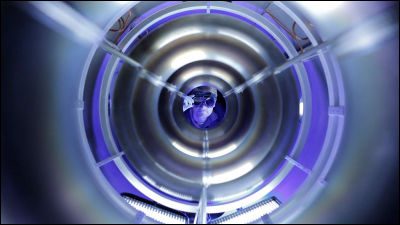Japanese and US research teams successfully test ``innovative nuclear fusion technology that does not use radioactive materials''

Nuclear fusion reaction is the fusion of light nuclides such as hydrogen and helium to form heavier nuclides. Nuclear fusion power generation is a clean and efficient alternative to conventional power generation. It is expected that it will be a power generation system. Newly reported that TAE Technologies , an American fusion power generation technology development company, and Japan's National Institute for Fusion Science (NIFS) have successfully tested an innovative fusion technology using hydrogen and boron .
First measurements of p11B fusion in a magnetically confined plasma |
https://doi.org/10.1038/s41467-023-36655-1

First measurements of hydrogen-boron fusion in a magnetically confined plasma
https://phys.org/news/2023-02-hydrogen-boron-fusion-magnetically-confined-plasma.html
'100,000 years of power' | US-Japan team hails H2-boron plasma fusion breakthrough | Recharge
https://www.rechargenews.com/energy-transition/100-000-years-of-power-us-japan-team-hails-h2-boron-plasma-fusion-breakthrough/2-1-1411318
Nuclear fusion reactions are expected to be a new clean energy source because they produce energy with little nuclear waste or greenhouse gases. You can understand what kind of power generation method nuclear fusion power generation is by reading the following article.
What kind of reaction is 'nuclear fusion'? What is the reason why it is expected as the next generation clean energy - GIGAZINE

At the time of writing the article, dozens of teams around the world are competing to commercialize nuclear fusion power generation, and the mainstream is nuclear fusion using hydrogen and tritium (tritium) . However, tritium is a radioactive isotope with radioactivity, and has the drawback of being extremely rare and expensive.
Therefore, TAE Technologies is working on the development of hydrogen-boron fusion power generation using boron, which is abundant on the earth and safer, as an alternative to hydrogen-tritium fusion power generation. In 2021, we announced that we will partner with NIFS and conduct experiments on hydrogen-boron fusion reactions using NIFS' Large Helical Device (LHD) .
This time, the research team used a magnetic confinement method that uses a magnetic field to confine the plasma, and reports that it has completed the first hydrogen-boron fusion reaction test in history. The hydrogen-boron fusion reaction releases helium nuclei, also called alpha particles, as a by-product. The research team used this to confirm the emission of alpha particles accompanying the nuclear fusion reaction using a custom-designed detector.
In their paper, the research team states, ``The research described below is the result of a public-private partnership between Japan's National Institute for Fusion Science (NIFS) and TAE, and builds on the long history of cooperation between Japan and the United States in fusion energy research. It is a thing.' Michl Binderbauer, CEO of TAE Technologies, said: 'This experiment provides us with a wealth of data and demonstrates that hydrogen-boron is suitable for practical-scale fusion power generation. We are confident that we will be able to solve the physical challenges and provide the world with innovative new forms of carbon-free energy from this non-radioactive and abundant fuel (boron).'
Many fusion power generation companies use a tokamak type to confine the plasma, but TAE Technologies uses a reverse magnetic field coordination type (FRC) method. In a general tokamak type, the fuel used is limited to hydrogen-tritium, but the FRC adopted by TAE Technologies is highly versatile and can be used not only for hydrogen-tritium, but also for hydrogen-boron and tritium. - It is said that it can also correspond to combinations such as helium. In addition, FRC requires a smaller footprint than the tokamak type and may generate up to 100 times more power.
TAE Technologies hopes that the results of this study will enable technology licensing by then, with the ultimate goal of using the first hydrogen-boron fusion power reactors to deliver electricity in the 2030s. I'm going A spokesperson for NIFS said, 'The hydrogen-boron combination enables the concept of cleaner fusion reactors. This achievement is a step toward realizing fusion reactors using advanced fusion fuels.' It's a big step,' he commented.
Related Posts:
in Science, Posted by log1h_ik






